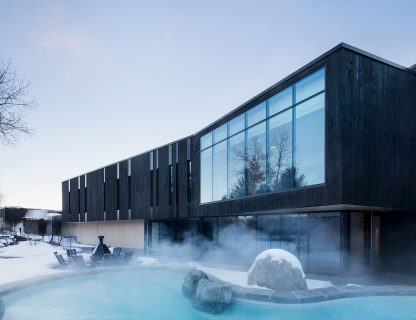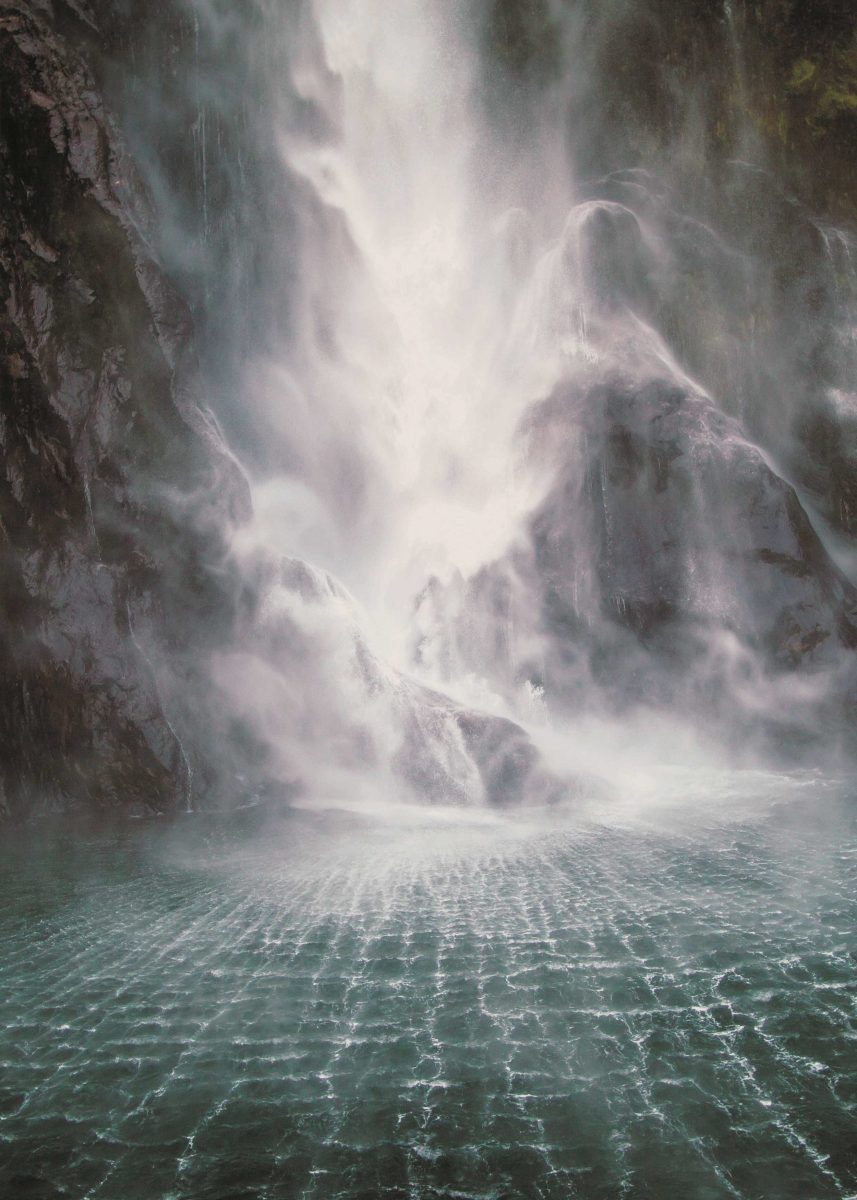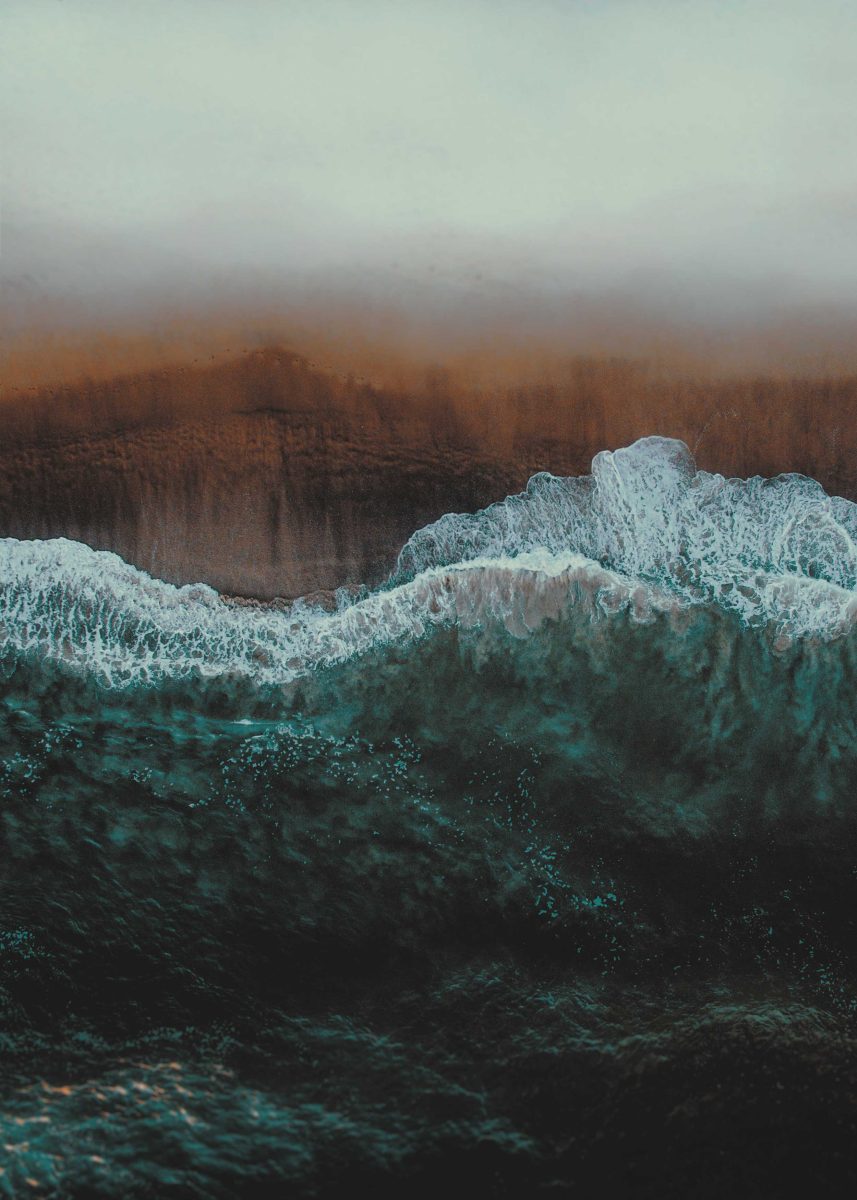Philosopher Gaston Bachelard once said that “water is the organ of the world.” But what happens when our most complex organ, our brain, resonates with the fundamental characteristic of the planet, water?
THE BLUE MIND
In his book Blue Mind, doctor of biology Wallace J. Nichols brought together a group of scientists, psychologists, researchers, educators, athletes, explorers, businesspeople, and artists to answer this question. His finding: oceans, lakes, rivers, pools, spas, and even fountains can considerably influence the mind. The appearance, sound, and smell of water have an impact on the brain. When it comes into contact with water, the mind is filled with a deep, immersive, and invigorating peace. This contact improves performance, increases calm, decreases anxiety, and may thereby increase professional success.
Nichols gives a name to the human-water connection: the blue mind. The blue mind refers to the neurological, psychological, and emotional changes that our brain undergoes when we are near water. This is a natural state that we know instinctively, but which many of us have forgotten, too distracted by the modern world.
This state is characterized by a feeling of calm, peace, unity, general happiness, and satisfaction in the present moment. It is inspired by water and the elements associated with water, the colour blue, and the feeling of immersion. The blue mind illustrates not only the essential nature of our connection with water, but also the importance of getting closer to it.
INNATE LOVE
In 1984, biologist and naturalist Edward O. Wilson coined the term “biophilia” to describe his hypothesis that an intuitive link between nature and humanity is ingrained in the human genome. Humans are instinctively connected with nature and water on a physical, cognitive, and emotional level. The concept of biophilia refers to the innate human need to integrate with the natural world. Having lost their bearings, modern humans must reconnect with their fundamental love for living beings. An innate love that is as strong as it is vital. Visual contact with water and nature has reassuring and beneficial effects on the brain. It’s as simple as that.
In his book Blue Rooms, American author John Jerome adds an important element to all this: entering water also means experiencing the present moment in total closeness. Intimacy is born between the self and water. “The Earth is beautiful because of water,” explains John Jerome, using the most eloquent examples. In Jerome’s work, water is neither a commodity nor a resource, but rather an evolving framework of escape, pleasure, and reconnection.
From the psychic joys of swimming to the presence of water in the natural world, the author’s vision transports us into a meditative space that soothes the soul by changing the way we perceive what might at first seem commonplace.
THE SACRED WATERS
Purifying, invigorating, and charged with history and spirituality, the sacred waters of the world have one thing in common: they never exist alone. Interacting with all living beings, they bear witness to the universality of a special bond: the union between the faithful and the divine.
Among the Egyptians, in the time of the ancient civilizations, the Nile was a fully fledged god, venerated and honoured for its waters, its fertile soil, and the abundance produced by its floods. Further east, the Ganges is recognized by the Hindus for its sacred and purifying waters that free the believer from their sins and the souls of the deceased. In the southern United States, the Mississippi River, recognized as “the father of waters,” is historically the sacred river of the Mississippi people, home of the spirits of nature. A force that carries both meaning and memories.
Each river has its own unique cultural, symbolic, and ritual relationship, but similar characteristics can be observed from one region to the next: the creation of emblematic stories, a privileged relational dynamic, water as a source of life, the cult of offering and purification.
THE POETICS OF WATER
By observing water and its mysteries, philosopher and poet Gaston Bachelard bears witness to the depth of water through contemplation, reverie, imagination, and the psychoanalysis of symbols. An essay on the poetics of the subject that navigates still waters and clear waters, demystifying the morality and the speech of water.
By capturing the image of the sky and nature, the body of water mirrors its own scenery. A new reality emerges from its reflection, a form of unity devoted to creative reverie. Multiplying images and possibilities, the infinity within the dreamer is as deep as the waters they observe. Here, water becomes a muse or an unlimited source of inspiration.
Streams, rivers, waterfalls, and seas have a voice that humanity naturally understands. Water is experienced as a long silence: “There is always an extraordinary silence… We could hear the water sleeping” (Pelléas et Mélisande, Maurice Maeterlinck).
To immerse itself in silence, the soul seeks out sleeping nature. To soothe itself, it turns to still waters.
AN INTERDISCIPLINARY RELATIONSHIP
Examined from the perspective of science, spirituality, philosophy, or even poetry, the connection between humanity and water transcends ideas, continents, and years, offering us an observation that is as simple as it is fundamental: near water, humans find themselves and soothe themselves. Regardless of its scale, this contact with water is undoubtedly positive. From the riverbanks to the sea, including spas, pools, aquatic gardens, and fountains, water reunites, gathers or isolates, warms or cools, purifies, lightens, transports and comforts, always making an impression in the process.
SOURCES
-
Bachelard, Gason (1942). L’Eau et les Rêves. Paris, France : Librairie José Corti.
-
Nichols, Wallace (2014). Blue Mind. New York, États-Unis : Back Bay Books.
-
Jerome, John (1997). Blue Rooms. New York, États-Unis: Henry Holt & Company.
-
Wilson, Edward (1984). Biophilia. Paris, France : Librairie José Corti.
-
Orsenna, Erik (2020). L’esprit des fleuves, Calendrier des religions. Lausanne, Suisse : Édition Agora









